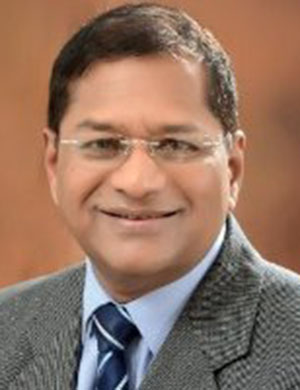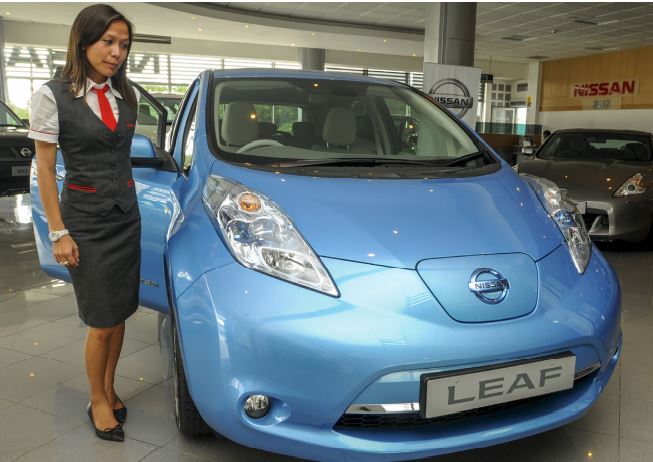Publicité
Transitioning towards Electric Cars
Par
Partager cet article
Transitioning towards Electric Cars

The electric car (EC) market in Mauritius is still relatively limited but making modest progress. Most sales of fully electric cars are at the top luxury end, abetted by the nil tariff on ECs. This allows them to be priced at just under that for luxury Internal Combustion Engine cars (ICECs), the latter attracting heavy tariffs. Consumers have been generally initiated in the electric car domain through hybrid cars. The market for ECs is set to grow significantly with on the one hand, governments around the world pushing hard for emission free, climate neutral and energy security strategies and on the other, continually falling prices. In time, EC’s superior technology and declining prices will eventually overwhelm the ICECs.
In a previous paper* we explained the stakes for the country in embarking on an electric vehicle mobility strategy. In this paper, we discuss the ECs. We first look at the different types of ECs, following here the technical names used in the industry.
Hybrid Vehicle
A hybrid car combines an internal combustion engine with an electric motor and batteries. The battery of the hybrid is not charged as for an EC. It gets its energy through a regenerative braking process. The electric motor does not act as a power train to drive the car. Its purpose is to optimise the performance of the combustion engine and to help maximise fuel efficiency.
Plugin Hybrid Electric Vehicle (PHEV)
Plugin Hybrid cars have batteries which can be recharged by plugging in an electricity outlet.
In contrast with the Hybrids, for the PHEV, driving is done using both the electric motor and the fuel engine.
Conceptually, initially the PHEV uses electrical energy predominantly to drive the car with only a small fuel input. As the travel distance increases, more fuel energy is used till it shifts over to the fuel engine. Some PHEVs have an electriconly range of around 45 km. During the electric phase, the fuel consumption can be as low as 2.5l/100 km increasing to some 8l/100km during the fuel combustion phase.Thus, for short daily journeys, the PHED would be mostly on electric phase and thus overall fuel economic.
Then again, both the hybrid and the PHEV still use combustion fuel, and thus emit carbon dioxide and pollutants in their tail pipes. As countries move towards 100% emissionfree new passenger vehicles, both the hybrids and the PHEVs along with ICECs, are set to disappear in the coming decade or so.
Battery Electric Vehicle (BEV)
The BEVs, which includes the Electric Cars (ECs) are the stateof-the-art and exciting vehicles of the moment. The ECs are fully electric cars, having no petrol engine, and operating only via an electric motor and battery. The battery can be charged by plugging the car into a house socket. ECs have zero carbon and zero emissions and are also quiet for both passengers and for those outside the car. Car makers are having to add fake noise to electric cars to comply to pedestrian safety regulations.
A particular concern is whether the battery has sufficient charge for the car to reach its destination. This is termed “Range Anxiety” and is probably the greatest psychological barrier to potential users of ECs. Early models have had poor reputations, but electric cars of late, have ranges that would quell such apprehensions. With full battery charge, some standard to midrange models with batteries of up to 30 kWh are having ranges of around 225 km. An average driving distance to work and back and around in the country could be less than 60 km.
At present the EC battery is the costliest element of the car accounting for as much as 30%. It also tends to be heavy (around 300 kg for a 50 kWh battery) and taking up space. With constant development and mass production, battery cost is fast falling. This would bring down the cost of the electric car.
Charging the Electric Cars
The EC comes with an onboard charger for overnight charging at home. Two power rating charger options can be provided. The 3 kW one can charge a 50 kW battery car overnight in some 8-10 hours. The 7kW in some 4- 5 hours. Usually it takes less time as invariably, there is remaining charge in the battery just like the phone. As well, manufacturers recommend charging up to 80% only.
The EC can also be charged on an accelerated and fast charging modes. A 22 kW charger would take about one hour and a 43 kW fast charger in some 20 to 30 minutes. Such fast chargers are normally installed at filling stations and shopping malls and are available on complementary (free) or pay basis.

Running cost of the ECs
The purchase price of a midrange EC is presently largely higher than a corresponding ICEC. However, the running cost of the EC is very much lower. If the purchase and usage price of both cars (Total Cost of Ownership) are compared over a period, say ten years, it has been shown that the total cost of the EC is much less than that of the ICEC. This arises primarily as the electricity cost of running the EC is much lower than the fuel expense of the ICEC. An approximate assessment of this comparison could be illustrated as follows:
CEB’s highest domestic electricity price is Rs 8.77 per kWh. Taking an actual mid-range electric car which has a battery of 52 kWh, the cost of charging the car from zero to full charge is therefore Rs 456. As per the manufacturer specifications, this full charge translates to a maximum range of 395 km. Now, assuming a commute of 60 km daily (37 m), the monthly run of a car could be around 1800 km per month. Thus, the cost of running the 1800 km of the EC is about Rs 2,080 per month or about Rs 25,000 annually.
For a similar range ICEC, the fuel efficiency for the daily driving-for-work conditions could be around 7.7 litre per 100 km. At the present price of Rs 44 per litre, the cost of fuel for running the 1800 km would be about Rs 6,100 per month or about Rs 73,000 per year.
Thus, the EC has a running cost of about a third to half of that of the ICEC. Car fuel price is less stable than electricity price, is subject to much regular revisions and is an easy prey for additional taxes to increase government revenue.
The maintenance cost of the EC is also significantly lower, the ECs needing no such items as lubricating oil, spark plugs, filters.
Government Incentives
Government has put forward some incentives to encourage purchase of hybrids and electric cars. Whereas, for example, ICECs have an excise duty rate of 50% in the popular 1,001 – 1,600 c.c. range, the corresponding hybrids rate is 25%. There is no duty on medium sized ECs. Luxury ECs attract zero duty below 180 kW power and 25% duty for those above 180 kW. This compares to 100% duty on their conventional luxury’s counterparts.
As well, motor vehicle yearly renewal licence and registration fees are 50% lower for hybrids and ECs. Further, the cost of acquisition of a fast charger for an electric car can be deducted from the taxable income of an individual. Twice as much can be deducted by a business.
Policies for ECs
The slow growth of the EC market may be attributed to primarily the comparative price of ECs but also to a lack of knowledge on the ECs. This has led to both suppliers and consumers being cautious on the ECs. Government has for long promoted electric vehicles through tax rebates and other instruments. The following may be observed. (1) Hybrid cars have made most of these incentives. Though the hybrids are fuel efficient cars, they represent a loss of revenue for the government without bringing in commensurate benefits to the country towards decarbonisation, emission free and energy security economy. These latter pursuits are better served with pure electric cars and to a lesser extent for now, the PHEVs. (2) A strong advocacy for ECs could also be bridging the gap between the price of ECs and corresponding ICECs through taxing more the ICECs, for some number of years by which time the falling ECs prices would have levelled with the ICECs. (3) The present income tax relief for purchase of fast chargers do not seem to serve its purpose as chargers of sufficient power is provided by the suppliers on purchase of an EC. A better alternative would be to provide EC purchasers an income tax allowance that could partly made up for the large difference in price in relation to a conventional car.
Further, as importantly, the purpose of having ECs in the country would be lost if the authorities do not have corresponding resolute strategies and actions towards renewable energy replacing fossil fuel for production of electricity.
Finally, there are reasons to believe that there could soon be a turning point in the interest of consumers towards ECs in the country. First people are gradually becoming much more knowledgeable on ECs. Second with battery cost falling, manufacturing scale up and more standard and mid-range EC models in the works of car firms, the price of ECs could be joining that of the ICEC, making the EC much more attractive. Third, the major apprehension regarding the distance range of the ECs is not an issue in this country, more so with the latest ECs. Fourth, the young generation is showing increased environmental awareness. Fifth, even consumers who are least fretful with the impact of their car on the environment would find that the cost of running an EC is significantly much lower than for the conventional cars.
*https://www.lexpress.mu/ node/383132
Publicité
Publicité
Les plus récents






